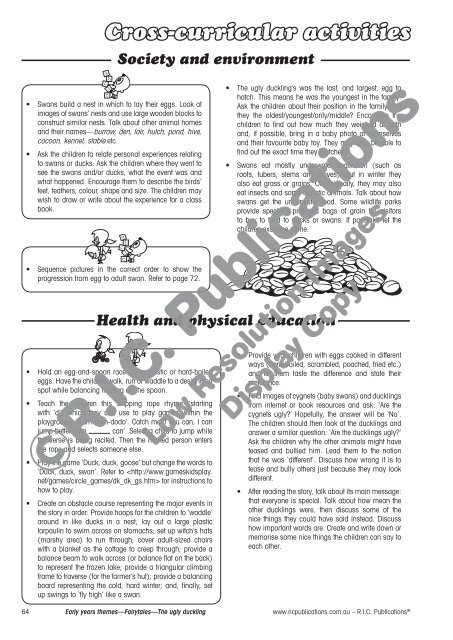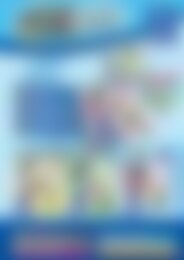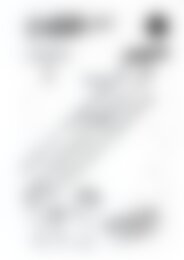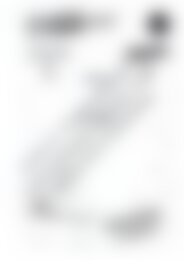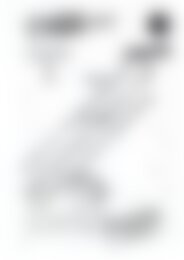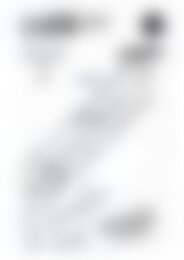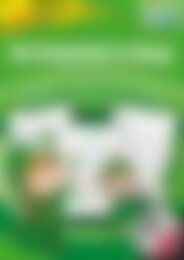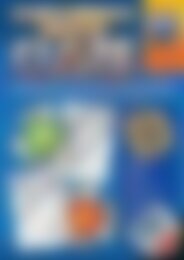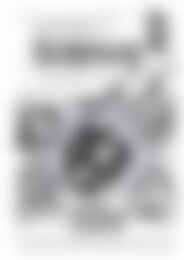RIC-20938 Early years Fairytales - Ugly Duckling
You also want an ePaper? Increase the reach of your titles
YUMPU automatically turns print PDFs into web optimized ePapers that Google loves.
Cross-curricular activities<br />
Society and environment<br />
• Swans build a nest in which to lay their eggs. Look at<br />
images of swans’ nests and use large wooden blocks to<br />
construct similar nests. Talk about other animal homes<br />
and their names—burrow, den, lair, hutch, pond, hive,<br />
cocoon, kennel, stable etc.<br />
• Ask the children to relate personal experiences relating<br />
to swans or ducks. Ask the children where they went to<br />
see the swans and/or ducks, what the event was and<br />
what happened. Encourage them to describe the birds’<br />
feet, feathers, colour, shape and size. The children may<br />
wish to draw or write about the experience for a class<br />
book.<br />
• The ugly duckling’s was the last, and largest, egg to<br />
hatch. This means he was the youngest in the family.<br />
Ask the children about their position in the family. Are<br />
they the oldest/youngest/only/middle? Encourage the<br />
children to find out how much they weighed at birth<br />
and, if possible, bring in a baby photo of themselves<br />
and their favourite baby toy. They may also be able to<br />
find out the exact time they ‘hatched’.<br />
• Swans eat mostly underwater vegetation (such as<br />
roots, tubers, stems and leaves), but in winter they<br />
also eat grass or grains. Occasionally, they may also<br />
eat insects and some aquatic animals. Talk about how<br />
swans get the underwater food. Some wildlife parks<br />
provide specially prepared bags of grain for visitors<br />
to buy to feed to ducks or swans. If possible, let the<br />
children examine some.<br />
• Sequence pictures in the correct order to show the<br />
progression from egg to adult swan. Refer to page 72.<br />
Health and physical education<br />
• Hold an egg-and-spoon race using plastic or hard-boiled<br />
eggs. Have the children walk, run or waddle to a designated<br />
spot while balancing the egg on the spoon.<br />
• Teach the children this skipping rope rhyme (starting<br />
with ‘d’) which they can use to play games within the<br />
playground: ‘Dum-dum-dodo’. Catch me if you can, I can<br />
jump better than can’. Select a child to jump while<br />
the verse is being recited. Then the named person enters<br />
the rope and selects someone else.<br />
• Play the game ‘Duck, duck, goose’ but change the words to<br />
‘Duck, duck, swan’. Refer to for instructions to<br />
how to play.<br />
• Create an obstacle course representing the major events in<br />
the story in order: Provide hoops for the children to ‘waddle’<br />
around in like ducks in a nest; lay out a large plastic<br />
tarpaulin to swim across on stomachs; set up witch’s hats<br />
(marshy area) to run through; cover adult-sized chairs<br />
with a blanket as the cottage to creep through; provide a<br />
balance beam to walk across (or balance flat on the back)<br />
to represent the frozen lake; provide a triangular climbing<br />
frame to traverse (for the farmer’s hut); provide a balancing<br />
board representing the cold, hard winter; and, finally, set<br />
up swings to ‘fly high’ like a swan.<br />
• Provide your children with eggs cooked in different<br />
ways (hard-boiled, scrambled, poached, fried etc.)<br />
and let them taste the difference and state their<br />
preference.<br />
• Find images of cygnets (baby swans) and ducklings<br />
from internet or book resources and ask: ‘Are the<br />
cygnets ugly?’ Hopefully, the answer will be ‘No’.<br />
The children should then look at the ducklings and<br />
answer a similar question: ‘Are the ducklings ugly?’<br />
Ask the children why the other animals might have<br />
teased and bullied him. Lead them to the notion<br />
that he was ‘different’. Discuss how wrong it is to<br />
tease and bully others just because they may look<br />
different.<br />
• After reading the story, talk about its main message:<br />
that everyone is special. Talk about how mean the<br />
other ducklings were, then discuss some of the<br />
nice things they could have said instead. Discuss<br />
how important words are. Create and write down or<br />
memorise some nice things the children can say to<br />
each other.<br />
64 <strong>Early</strong> <strong>years</strong> themes—<strong>Fairytales</strong>—The ugly duckling www.ricpublications.com.au – R.I.C. Publications ®


